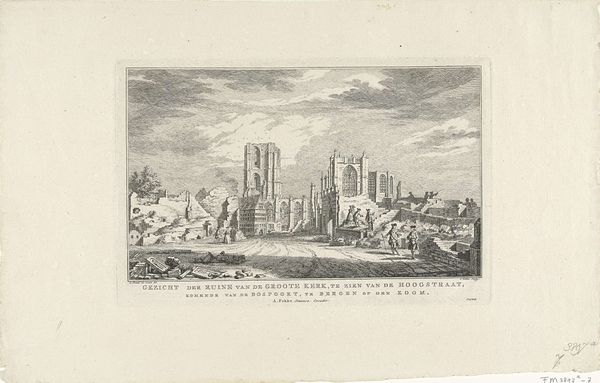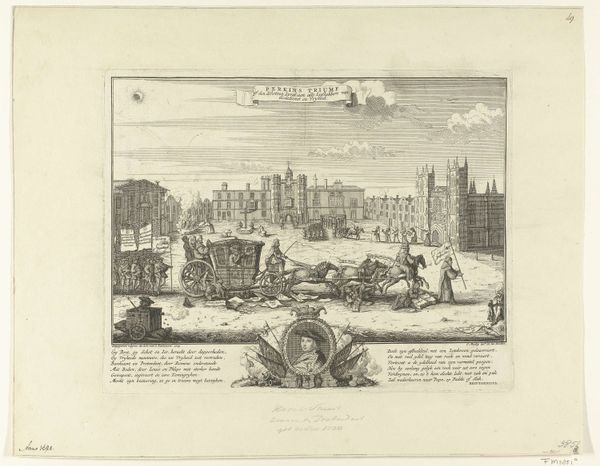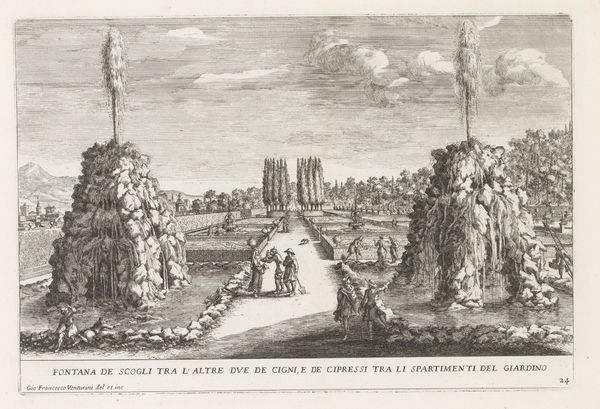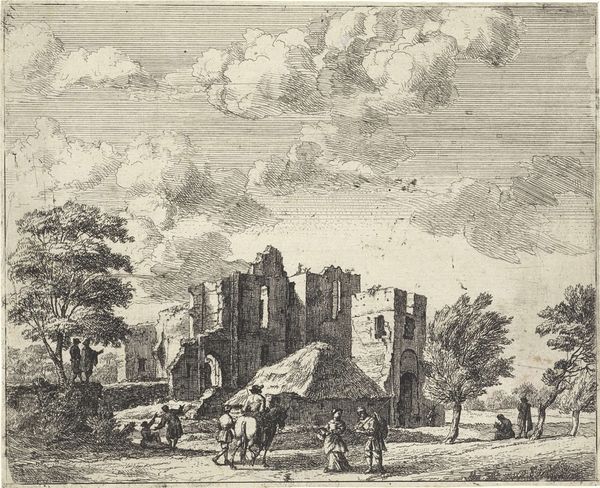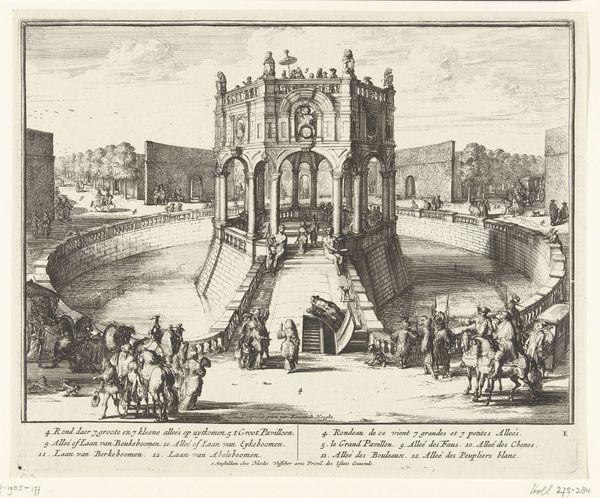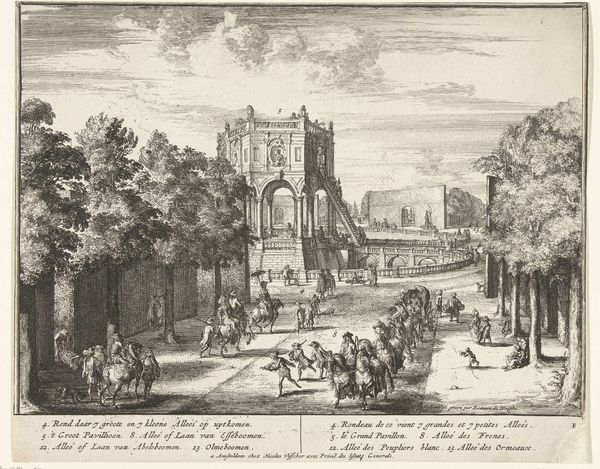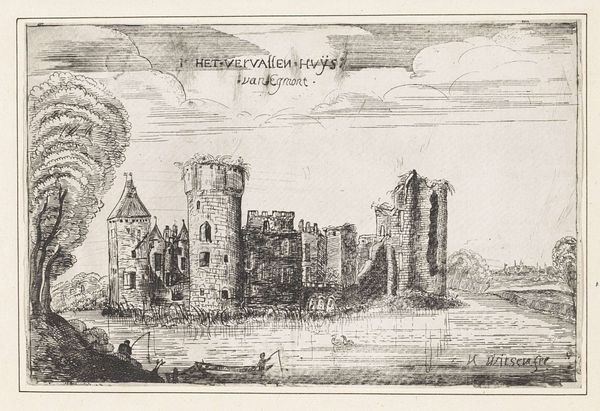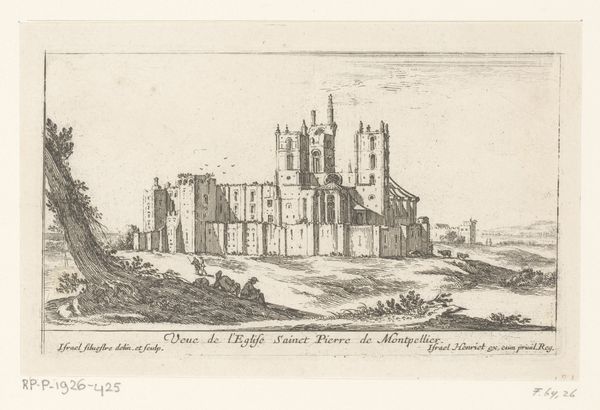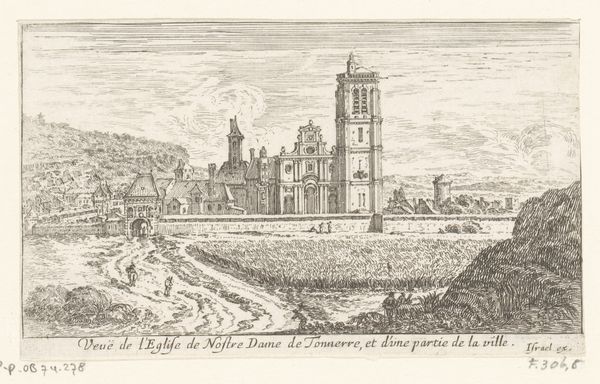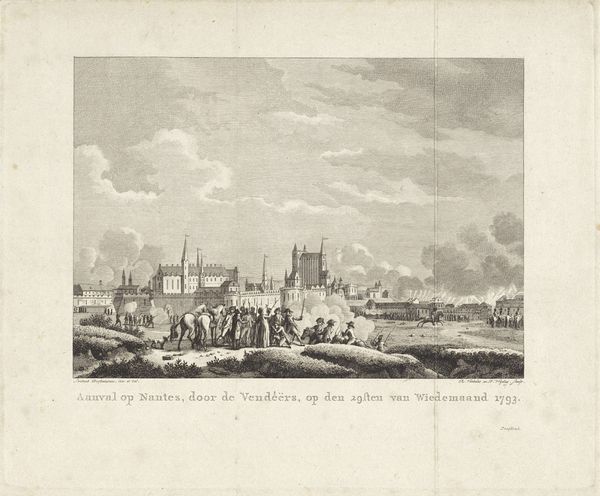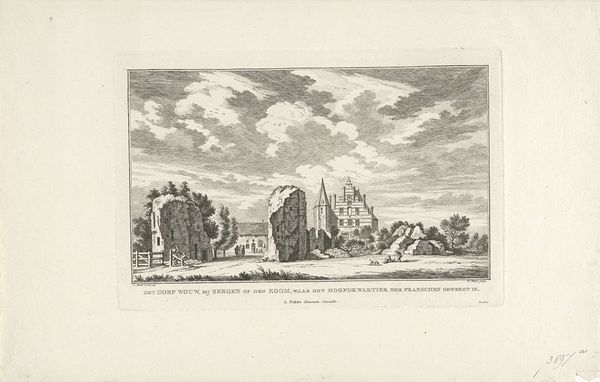
Dimensions: height 175 mm, width 265 mm
Copyright: Rijks Museum: Open Domain
Curator: Let's turn our attention to "Ruïne van de Grote Kerk van Bergen op Zoom," an engraving created between 1772 and 1780 by Simon Fokke. The print captures the ruined Great Church in Bergen op Zoom. What are your initial impressions? Editor: Immediately, I'm struck by the atmosphere of decay and the implications of power structures that have crumbled. You can almost smell the damp stone and feel the weight of lost history, a visual representation of decline. Curator: Absolutely. Ruins carry potent symbolic weight across cultures. In this work, we see not just physical destruction, but also perhaps a meditation on impermanence, the fading of societal power reflected in architecture. This wasn’t simply an aesthetic choice; religious wars impacted the region in 1580s, devastating much of the church. Editor: Precisely. The baroque style, evident in the meticulous details of the decaying structure, heightens the contrast. It begs us to ask: what narratives of power were intentionally left standing in a partially-razed structure and what were fully eradicated? How has the colonial lens shaped such historical views? Curator: Good point. There is that careful rendering. But what do you read from the activity surrounding the church; people appear to be collecting material? Does it depict something sinister in its exploitation, or does this perhaps portray themes of survival and reconstruction? The people carrying bricks perhaps show strength of society beyond religion? Editor: Perhaps both, the lines between sinister and celebratory can be unclear and overlapping. Consider that visual depiction itself is a construct, even in "objective" forms such as engraving. Who are these people, their positions and socioeconomic backgrounds reflected in dress or mannerisms. Fokke makes clear reference of societal continuity for the elite. Curator: You make an important distinction. This cityscape reveals more than bricks and mortar; it encapsulates societal values. How, in the 18th century, was loss, resilience, and possibly oppression conveyed through visual symbols, what were people expecting and hoping for when the view was rendered? Editor: By placing the church as a ruin against a blue sky the social disruption perhaps appears less dramatic; Fokke appears less inclined to draw out deep anger in 18th century Holland. Fokke highlights how ruins carry complex social narratives for Bergen op Zoom; they carry stories of resilience. Thanks for making me aware of the wider cultural implications.
Comments
No comments
Be the first to comment and join the conversation on the ultimate creative platform.
